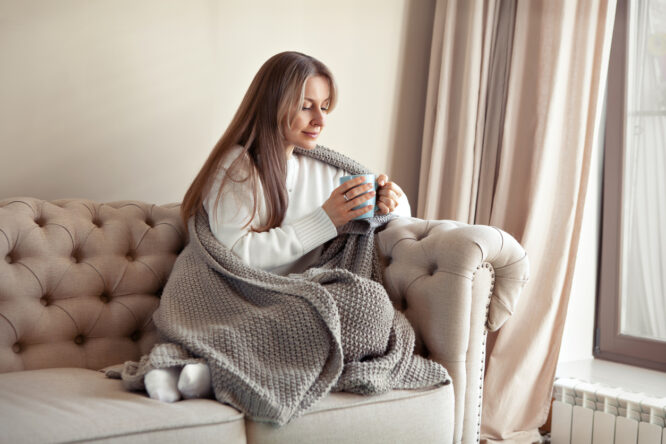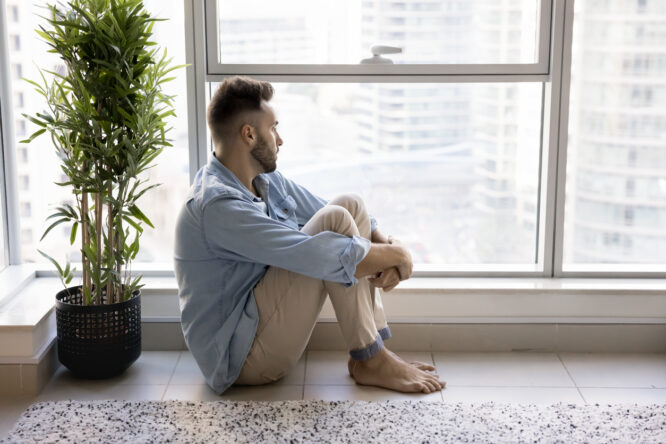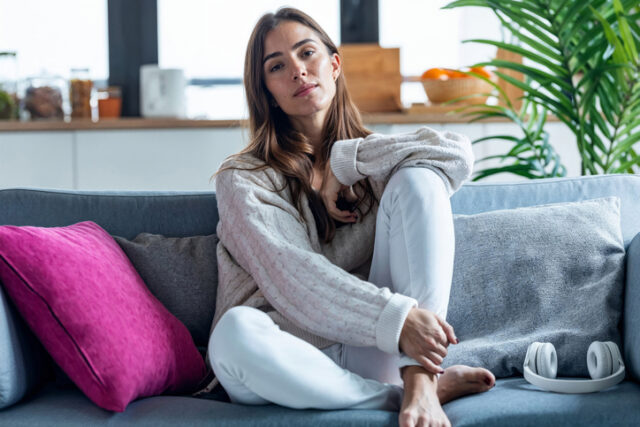Creating a home that feels safe, calm, and supportive can make a huge difference for someone on the spectrum.

Whether it’s a family member, friend, or just a visitor to your space, there are lots of little tweaks you can make to help make everyday life feel a bit easier and more comfortable. They won’t change the vibe or style of your home, but they will make it easier for anyone with autism or other neurodivergent conditions to feel more relaxed and at ease at your place.
1. Keep the layout predictable but not rigid.
 Source: Unsplash
Source: Unsplash Most people on the spectrum feel more at ease when they know what to expect, and that includes their space. Keeping things in familiar spots helps reduce mental overload and cuts down on daily stress. You don’t need to go full military precision, but try to avoid constantly rearranging things. Having a predictable home base gives them something steady to rely on, even when the outside world feels chaotic.
2. Create a quiet retreat spot.

Everyone needs a break sometimes, especially when the world gets too loud or overwhelming. Having a go-to spot at home, like a cosy corner or a calm bedroom setup, makes it easier to decompress. It doesn’t need to be anything fancy. Think low lights, soft textures, minimal clutter—just a space where they can relax and feel safe when they need to step away for a bit.
3. Pay attention to lighting.

Harsh lights can feel physically uncomfortable for a lot of autistic people, even if it’s subtle. Flickering overhead lights or super bright bulbs might be more distracting than you’d think. Softer lighting options like lamps, dimmers, or warm-toned bulbs can make a big difference. The goal is to keep the vibe calm and not too intense, and even small changes help.
4. Soften the sounds around the house.

Background noise can be a major sensory trigger. From buzzing electronics to loud appliances, it all adds up. Too much noise can make even a chill day feel overwhelming fast. Look for quieter appliance settings, try rugs or curtains to absorb sound, and consider noise-cancelling headphones or a white noise machine. A more peaceful sound environment can help everyone feel more at ease.
5. Limit visual clutter.

Too much stuff, even if it’s neatly arranged, can still feel visually overwhelming. A visually “busy” space can be distracting and make it harder to focus or unwind. It doesn’t mean your home has to be bare, just more streamlined. Clear surfaces, open space, and storage that hides things away help the whole place feel calmer without losing personality.
6. Use clear labels or visual supports.

Having clear labels on drawers, shelves, or containers can make routines easier and cut down on daily frustration. Visual cues help things feel more accessible and easier to navigate. This works great for both kids and adults. Even simple pictures or colour-coded bins can make tasks like getting dressed, packing lunch, or organising toys way less stressful.
7. Offer choices within structure.

Having too many options can feel overwhelming, but feeling like there’s no choice at all can be frustrating. Finding a middle ground—structure with small choices—gives a healthy sense of control. That could look like picking between two meals, choosing the order of a bedtime routine, or deciding what music plays during quiet time. It’s small stuff, but it can help things feel smoother and more respectful.
8. Consider textures that soothe rather than irritate.

Texture can be a big deal. Certain fabrics or materials can feel either super comforting or seriously distracting, depending on the person. Paying attention to this can make a home way more sensory-friendly. Try experimenting with soft blankets, squishy cushions, or even fidget-friendly textures. And if something’s scratchy, stiff, or annoying? Swap it out if possible, as comfort counts more than style here.
9. Keep routines visible.

Many autistic people thrive with structure, and being able to see the routine, not just hear it, helps it stick. A visual schedule or checklist on the wall can take a lot of mental load off. Even a handwritten whiteboard or printed schedule can be grounding. When the day has a flow to it, and it’s laid out clearly, it makes things feel more manageable and less uncertain.
10. Build in movement-friendly space.

Movement helps regulate energy and emotions, especially during high-stress moments. Having a space at home where jumping, stretching, or pacing is welcome can make a big difference. You don’t need a full sensory gym—just space for things like a mini trampoline, a wobble cushion, or room to dance around. Movement helps the body and brain reset when things feel too much.
11. Give control over personal space.

Having a space that’s “theirs,” whether it’s a room or just a corner, is huge. Letting them choose how it looks, feels, and functions builds comfort and a sense of safety. That might mean letting them control lighting, set up their stuff a certain way, or decide who’s allowed in. Respecting personal space builds trust and makes the home feel more like a refuge.
12. Watch for scent sensitivity.

Strong smells, even nice ones like candles or air fresheners, can be overwhelming for some autistic people. Scent is one of those things that often gets overlooked but can have a big impact. If certain smells seem to cause discomfort, try switching to unscented products or keeping scented things limited to specific areas. Less fragrance often makes the whole environment feel calmer.
13. Ask what helps, and actually listen.

No two people on the spectrum are the same, so the best thing you can do is ask what feels good and what doesn’t. They’ll often have clear preferences if you give them the space to share. What works for one person might be totally wrong for someone else. Creating an autism-friendly home isn’t about a checklist; it’s about paying attention, staying flexible, and showing that their comfort truly matters.




